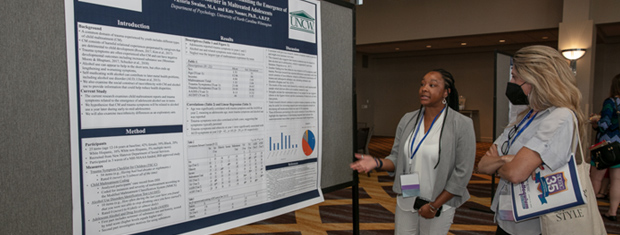




The APSAC Advisor is a peer reviewed quarterly news journal for professionals in the field of child abuse and neglect.
The APSAC Advisor provides succinct, data-based, practice-oriented articles that keep interdisciplinary professionals
informed of the latest developments in policy and practice the field of child maltreatment. It is designed to highlight
best practices in the field and publish original articles and current information about child maltreatment for professionals
from a variety of backgrounds including medicine, law, law enforcement, social work, child protective services, psychology,
public health and prevention in the U.S.
 If you wish to learn more about submitting an article to the Advisor, please click here.
If you wish to learn more about submitting an article to the Advisor, please click here.
This library contains Advisor issues dating back to the first issue in 1988. The most recent issue appears at the top.
Scroll down to select past issues by year and issue number. Once a publication appears in the box, you
can use the Enlarge button to open the document in a new window or tab (depending on how your browser is set up).
This will allow you to view the document with larger print.
To print a document, first use the Enlarge button to open the document in a new window or tab. Then use your browser's Print command.
To return here from a new tab, close the tab. To return from a new window, click your browser's Back button.
In the listing below, click on a year and issue number to see the articles in that publication.
1995 Number 4
CAPTA, Basic Protections for Children, in Danger Despite Vigorous Advocacy
In late November, the House-Senate conference committee on welfare reform produced in lieu of CAPTA a "Child and Family Services Block Grant" that is deeply troubling in its implications for abused and neglected children.
Risk Assessment: Expectations and Reality
Although the roots of current risk assessment models and practice can be traced to much earlier literature on decision making, case classification, and the prediction of child maltreatment behaviors (Starr, 1982), the beginning of the risk assessment movement is often cited as 1982, when Illinois implemented the first model formally used by a state child protective service (CPS) agency.
A Neighborhood-Based Approach to Risk Assessment
Child maltreatment risk assessment has generally focused on characteristics of the parent, attributes of the child, and parent-child interaction Early and continued research by Garbarino and colleagues alerted the field that child maltreatment is a matter not only of high-risk individuals and families, but also of high-risk neighborhoods.
The Use of Risk Assessment in Child Abuse Prevention
The social and health problems facing parents today are most serious and for some, overwhelming Among the consequences for children are poor nutrition, low immunization rates, lack of school readiness, and increasing rates of child abuse and neglect.
Legal Issues in the Use of CPS Risk Assessment Instruments
Historically, risk assessment has been conducted informally by child protective services (CPS) workers who have relied on general policy and practice guidelines and, ultimately, on subjective judgment.
Outcome Oriented Case Management From Risk Assessment Information
The connection of a risk assessment to client outcomes provides direction and clarity to child protective services (CPS) casework practice and case management. In simple terms, it involves matching a negative behavior or problematic family condition with a positive expected result.
Selected Multicultural Guidelines for Child Maltreatment Risk Assessment
Cultural competence in child welfare practice has received increasing attention over the past few years. A disproportionate number of children and families served in child welfare programs are people of color.
Assessing Risk Factors for Child Abuse: Guidance for Medical and Nursing Professionals
As mandated reporters of child abuse and neglect, physicians, nurses, and other health care providers are key in identifying and assessing the risk of maltreatment. They might see a child before, during, and after child protective services (CPS) involvement, thus providing a vital link in efforts to protect children